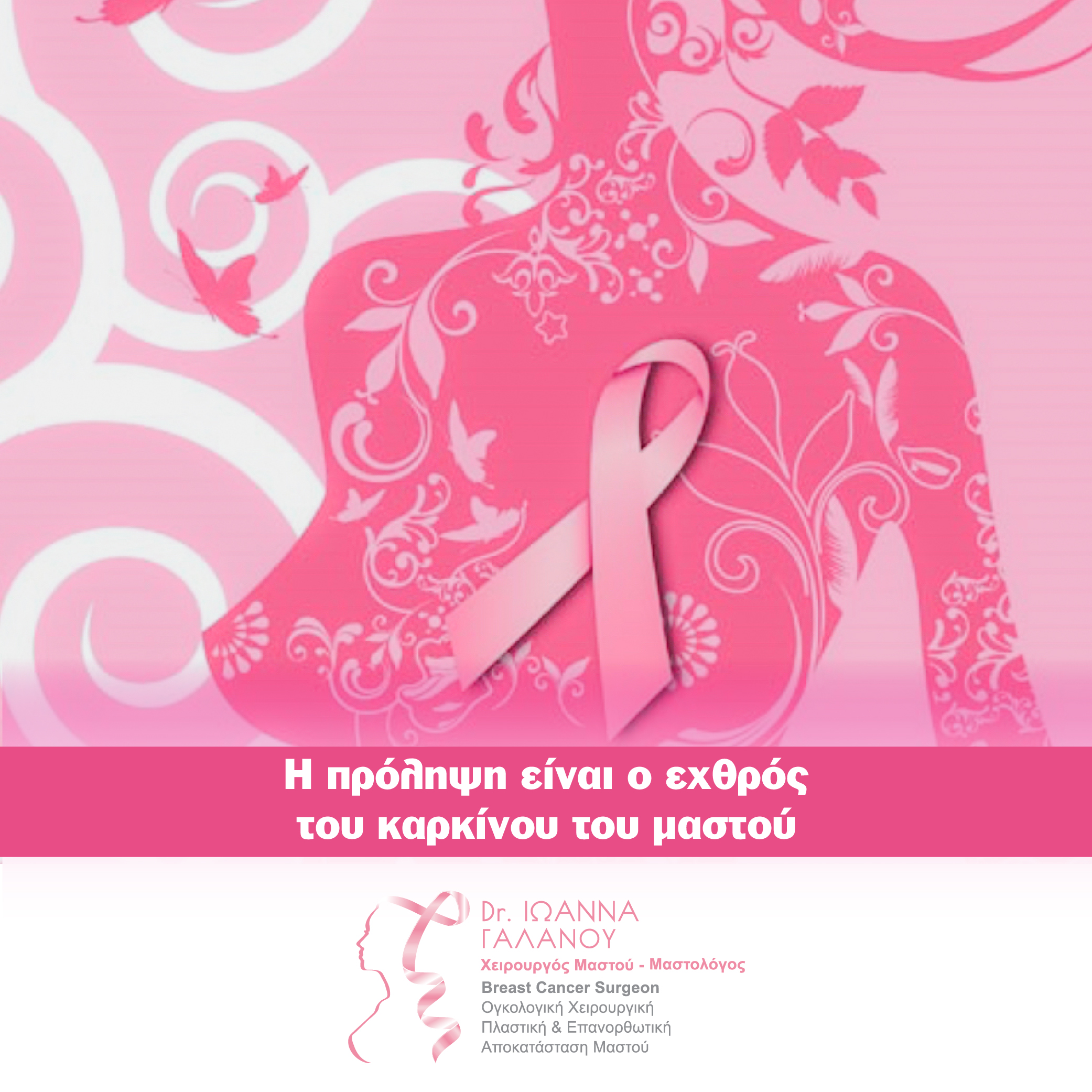
29 Mar The enemy of breast cancer is its prevention
The most valuable ally in the battle of breast cancer is not only the prevention, but also the diagnosis in the early stages. However, the presence of one or more nodules is not always synonymous with cancer. In fact, most breast lumps are just benign tumors, especially in young women.
A benign tumor consists of cells that simply grow without spreading to other organs. The most common benign lesions are:
- Inoadenomas
- Cysts, usually those who contain liquid.
- Mastitis and dysplasia.
Malignant tumors or carcinomas, on the other hand, mainly affect women at older ages, especially after menopause, and originate mainly from the cells lining the lobes. Over time, they tend to spread to other organs and destroy them through a process called metastasis. Metastasis is the most advanced stage of cancer development. The most common breast carcinomas are:
- Porogenous carcinomas, i.e. malignant lesions originating from the lactiferous ducts (small channels that have the function of bringing milk to the nipple during pregnancy).
- Lobular carcinomas, which are malignant lesions that develop in the lobules (glandular tissue responsible for milk production).
The importance of early diagnosis
Early diagnosis or screening includes tests aimed at detecting breast cancer as soon as possible, says Breast Surgeon Dr. Ioanna Galanou.
Identifying a malignant lesion at an early stage, when the tumor is still localized only in the breast, allows effective local interventions with the fewest complications, ensuring a complete cure in most cases.
Breast self-examination and breast cancer prevention
Breast self-examination is the first step towards prevention. It consists of a periodic conspectus, with the aim of detecting any changes in the breast. Since the appearance and texture of the breasts varies with the menstrual cycle, the best time to perform the self-exam is the week after your period.
The observation helps to highlight any changes in the shape of the breasts or irregularities in the skin and should be done in a standing position in front of a mirror.
Palpation is performed by applying gentle and even pressure with the fingertips over the entire breast, including the most peripheral areas, to locate any lumps.
It is important to see a specialist mammologist if there is a lump in the breast, in the armpits, in the supraclavicular or subclavian fossa, or if you notice a nipple discharge.
Mammological examination
The mammological examination is performed by palpation and inspection of the breasts for any abnormalities, by a specialized breast surgeon, who deals exclusively with the subject of the breast. The medical examination may be completed with diagnostic imaging tests such as mammogram, ultrasound, and MRI.
Mammogram and breast cancer prevention
A mammogram is an accurate and safe test that uses low-dose X-rays. This examination is able to detect lesions at an early stage, that is, when the nodule is so small that it cannot be felt by palpation. The most important points highlighted by the mammogram are:
- Calcifications or microcalcifications: are small deposits of calcium inside the breast. They usually appear as white spots. They may be caused by benign lesions or, less commonly, by malignant tumors.
- Shadows: generally caused by benign lesions such as cysts or fibroadenomas, but also by early-stage malignancies.
During the examination, the breast is compressed between two plates for a few seconds in order to obtain a clearly visible image.
Breast ultrasound
Breast ultrasound is a quick and safe test. Ultrasound makes possible the formation of a possible nodule, differentiating nodules into solid and fluid forms, as well as cysts. This investigation is usually done in younger women, since in this case the breasts are too dense to be well visualized by a mammogram.
Magnetic resonance imaging (MRI)
Magnetic resonance imaging (MRI) is a test that can diagnose even very small lumps in the breast. The procedure requires the administration of a non-radioactive contrast medium.
Puncture
Puncture is a diagnostic procedure in which cells are taken from the lump. The procedure is carried out through a small needle that is inserted into the breast, in order to ascertain its nature.
Ultrasound-, mammographic- or magnetic-guided biopsy
Biopsy under ultrasound, mammography or MRI guidance is the gold standard examination, which histologically identifies a lesion in case of benignity or malignancy. In the case of cancer, it gives further information about the molecular subtype, which is necessary in the case of a possible chemotherapy before surgery (neo-adjuvant chemotherapy).
In order to facilitate breast cancer prevention or early diagnosis:
- From the age of 20 and for life, it is necessary to carry out a breast self-examination once a month.
- In women with dense breast, I need a mammological examination, by a specialized breast surgeon, a digital mammogram with tomosynthesis after the age of 40 every year and a breast ultrasound.
